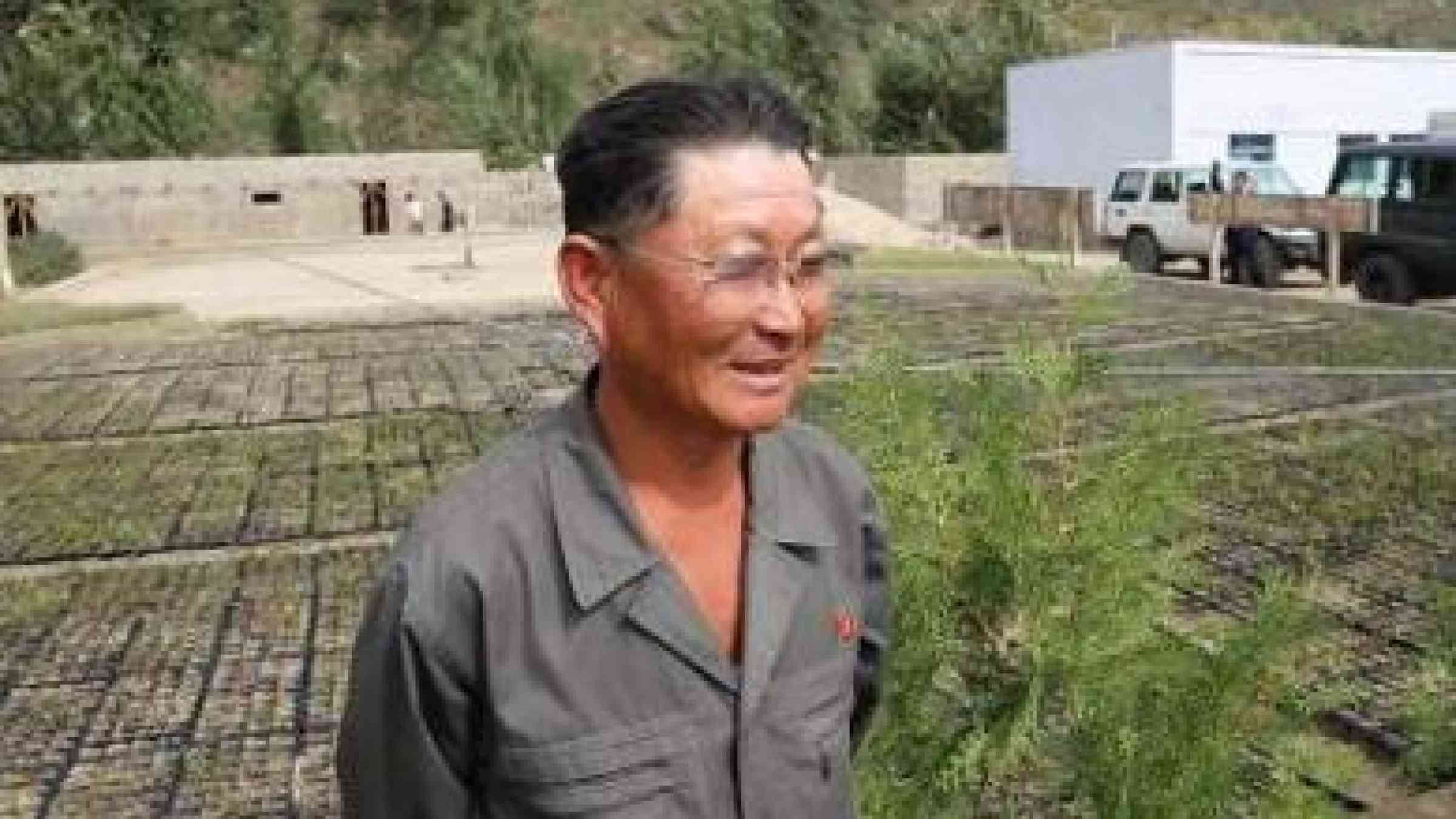Please help us improve PreventionWeb by taking this brief survey. Your input will allow us to better serve the needs of the DRR community.
N Korea: Building resilience and reducing the impact of disasters in Sinyang - IFRC

Photo by IFRC ong Sob Choe is the manager of the Sinyang County Tree Nursery. With support from the Integrated Programme the nursery produces tree seedlings that are planted on deforested slopes as part of disaster risk reduction efforts.
By Hler Gudjonsson
Sinyang County in South Phyongan Province used to be one of the most disaster prone areas in the Democratic People’s Republic of Korea (DPRK). In past years, a combination of drought, floods, deforestation, landslides and insufficient food production had a devastating effect on the livelihoods and safety of local people, killing hundreds and destroying homes and production facilities.
Through its Integrated Programme, which covers disaster risk reduction, community-based health care and water and sanitation, the DPRK Red Cross has significantly reduced the impact of disasters in Sinyang County and strengthened the community’s ability to cope with serious crises. The programme is supported through the International Federation of Red Cross and Red Crescent Societies (IFRC) and several Red Cross and Red Crescent national societies.
“Getting a water tap in my house changed my life completely,” said 52-year-old Mrs. Yong Ae Kim who is a farmer in Toyondong village in Sinyang County. Mrs. Kim is one of over 15,000 people in the rural areas of DPRK who now have improved access to clean water thanks to the new distribution system, built as part of the programme. “I used to carry the water in buckets over long distances. This was really hard work for me, especially during winter when the road was slippery and dangerous.” Mrs. Kim added. “Now the water just comes to my house through a pipe and I only have to turn the tap to get as much as I could ever need.”
This project, which only costs 21 USD per household, is a good example of how a low-cost intervention can have an enormous impact within a community.
Supporting reforestation efforts is also a vital part of the Integrated Programme.
“Every year we plant thousands of tree saplings in the areas around our community,” said Mr. Jong Sob Choe, manager of Sinyang County Tree Nursery. He recalled how flash floods killed about 100 people in Sinyang County in 2006. “These trees will serve to reduce the impact of flash floods and mudslides as they help to retain water and bind the soil.”
The DPRK Red Cross is also providing limited stocks of essential medicines to local health facilities, augmenting supplies provided by the government.
“We keep small stocks of antibiotics and painkillers for emergencies, but we do not have enough to treat all patients,” said Mrs. Song Ran Yun, who is a pharmacy nurse at the Sinyang County Eup Polyclinic where the Red Cross has also provided a water heater. Red Cross volunteers play an important role in preventative health care, giving first aid training to members of the community and health education and hygiene awareness sessions.
“All this reduces the number of patients and makes it easier to treat them if they have to come to the clinic,” said Mrs. Ha Chang Hui, the clinic’s household doctor.
Explore further
Please note: Content is displayed as last posted by a PreventionWeb community member or editor. The views expressed therein are not necessarily those of UNDRR, PreventionWeb, or its sponsors. See our terms of use
Is this page useful?
Yes No Report an issue on this pageThank you. If you have 2 minutes, we would benefit from additional feedback (link opens in a new window).